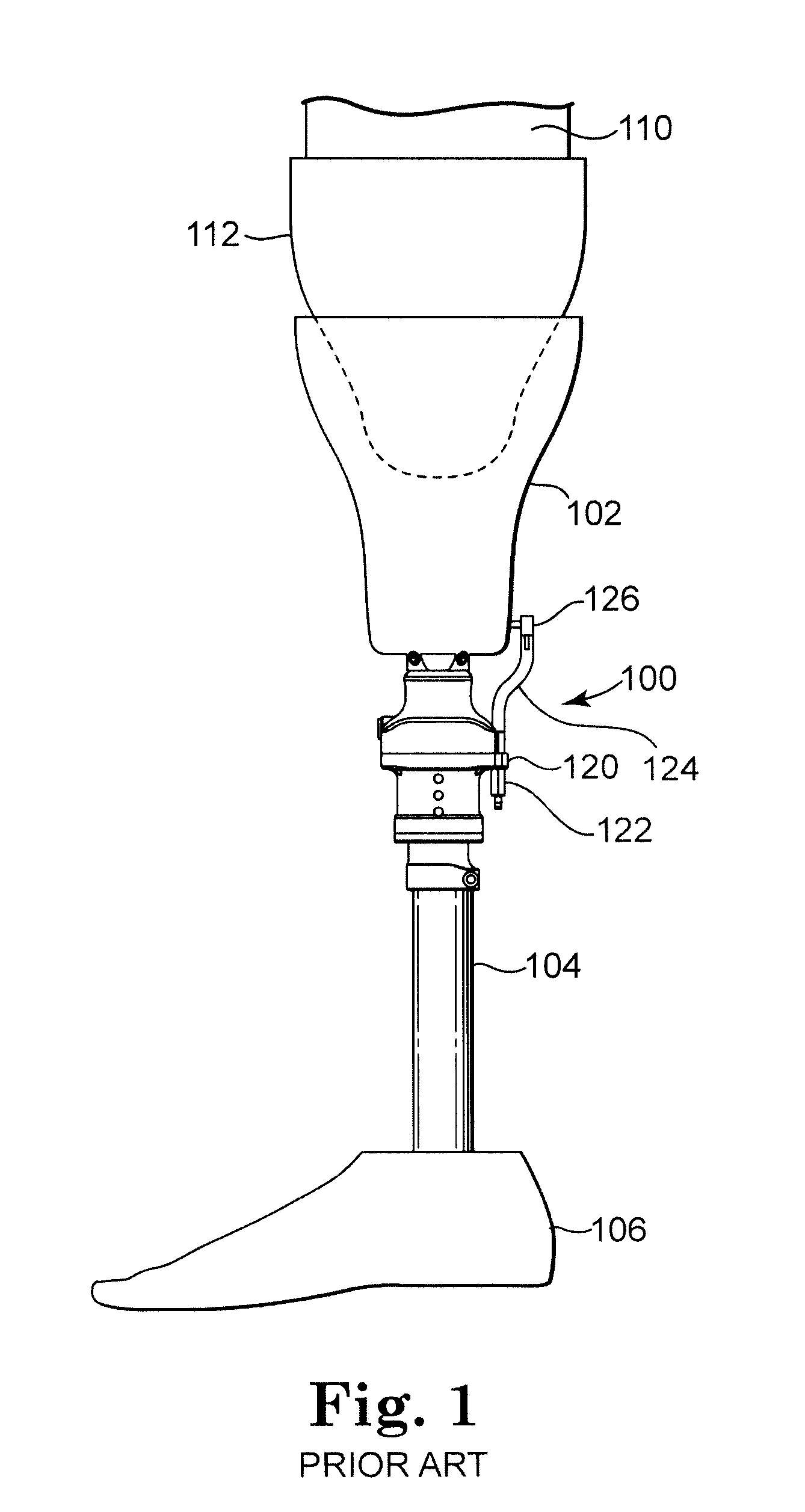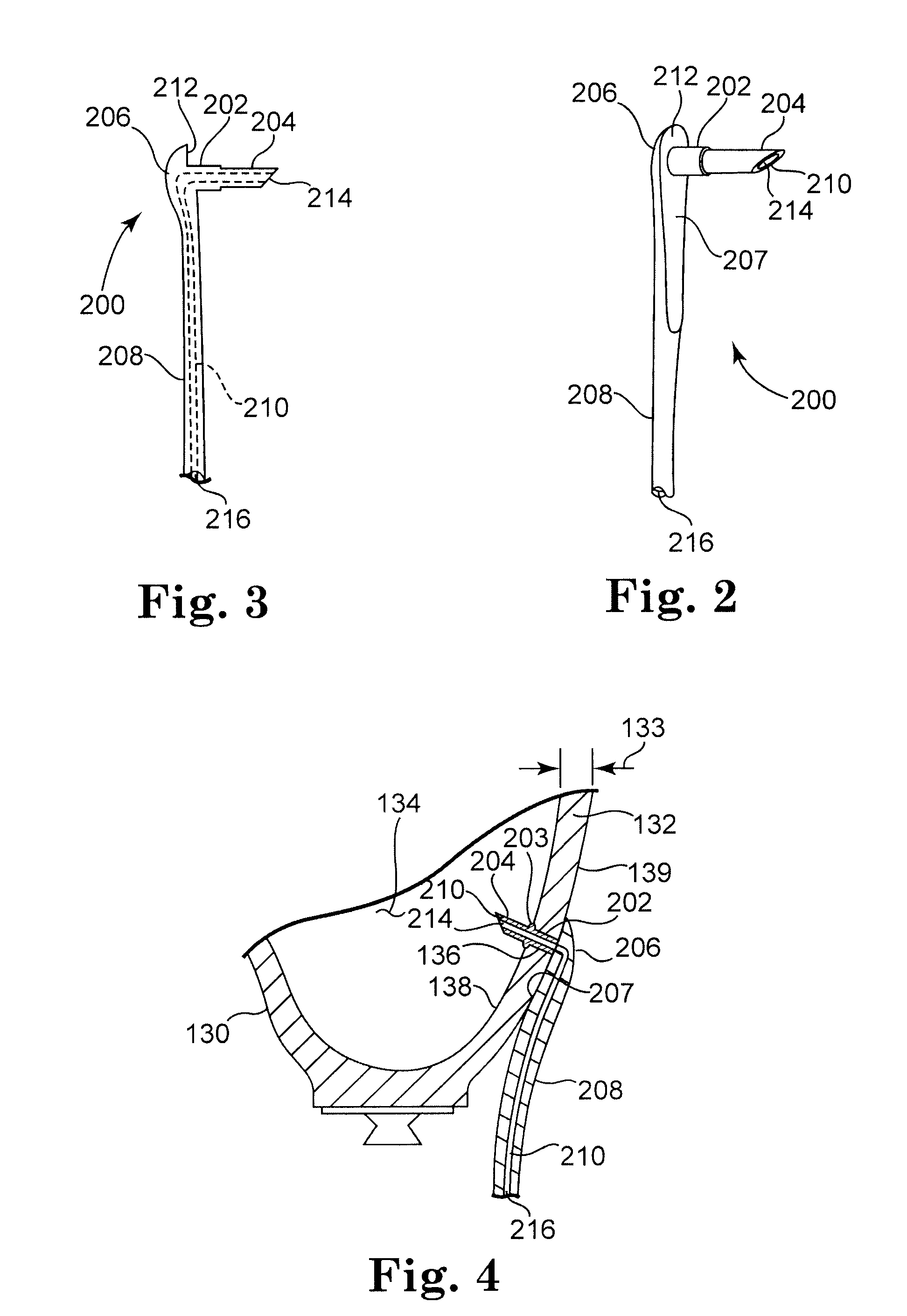Pneumatic connections for prosthetic socket
a technology of prosthetic sockets and connectors, which is applied in the field of pneumatic connectors for prosthetic sockets, can solve the problems of swelling into the end of the socket, and affecting the function of the prosthesis
- Summary
- Abstract
- Description
- Claims
- Application Information
AI Technical Summary
Benefits of technology
Problems solved by technology
Method used
Image
Examples
first embodiment
[0041]FIGS. 2 and 3 show a low profile flexible pneumatic connector 200 in accordance with the invention. Connector 200 is formed from a high strength elastomer or other suitable flexible material. Connector 200 includes elongated tubular section 208, flange 206, tubular head section 202, tubular insertion section 204, and lumen 210. Flange 206 is formed at one end of elongated tubular section 208 with tubular head section 202 extending from a portion of surface 212 on flange 206 and terminating as tubular insertion section 204. The outside diameter of tubular head section 202 is greater than the outside diameter of tubular insertion section 204. Lumen 210 extends the length of connector 200 between opening 214 of tubular insertion section 204 and opening 216 the other end of elongated tubular section 208.
[0042]FIG. 4 is a partial cross-sectional view of artificial limb socket 130 having connector 200 mounted through wall 132 of socket 130. Socket 130 includes socket wall 132 having...
second embodiment
[0045]FIGS. 5 and 6 show a low profile flexible pneumatic connector 300 in accordance with the invention. Connector 300 is formed from a high strength elastomer or other suitable flexible material. Connector 300 includes flange 306 having surfaces 312 and 313, tubular head section 302, elongated tubular section 308, and lumen 310. Flange 306 is formed at one end of tubular head section 302 having elongated tubular section 308 extending from the other end of tubular head section 302. Lumen 310 extends the length of connector 300 between opening 314 on surface 313 of flange 306 and opening 316 the other end of elongated tubular section 308. The outside diameter of tubular head section 302 is somewhat greater than the outside diameter of elongated tubular section 308.
[0046]FIG. 7 is a partial cross-sectional view of artificial limb socket 130 having connector 300 mounted through wall 132 of socket 130. In order to enable a snug and reasonably air-tight connection between connector 300 ...
third embodiment
[0048]FIG. 8 is a partial cross-sectional side view of a low profile flexible pneumatic connector 400 mounted through the wall 132 of artificial limb socket 130. Connector 400 is formed from a high strength elastomer or other suitable flexible material. Connector 400 includes flange 404 having surfaces 412 and 413, tubular head section 402, tubular bulbous section 420, elongated tubular section 408, and lumen 410. Tubular head section 402 includes flange 404 at one end, and tubular bulbous section 420 at the other end whereat tubular head section 402 transitions into elongated tubular section 408. The length of tubular head section 402 is equal to or slightly less than thickness 133 of socket wall 132, and yet it is sufficiently long so that tubular head section 402 extends within hole 136 to ensure a snug fit when surface 412 of flange 404 abuts against inner surface 138 of socket wall 132. As such, the combination of flange 404 and tubular bulbous section 420 aid in a snug connect...
PUM
 Login to View More
Login to View More Abstract
Description
Claims
Application Information
 Login to View More
Login to View More - R&D
- Intellectual Property
- Life Sciences
- Materials
- Tech Scout
- Unparalleled Data Quality
- Higher Quality Content
- 60% Fewer Hallucinations
Browse by: Latest US Patents, China's latest patents, Technical Efficacy Thesaurus, Application Domain, Technology Topic, Popular Technical Reports.
© 2025 PatSnap. All rights reserved.Legal|Privacy policy|Modern Slavery Act Transparency Statement|Sitemap|About US| Contact US: help@patsnap.com



